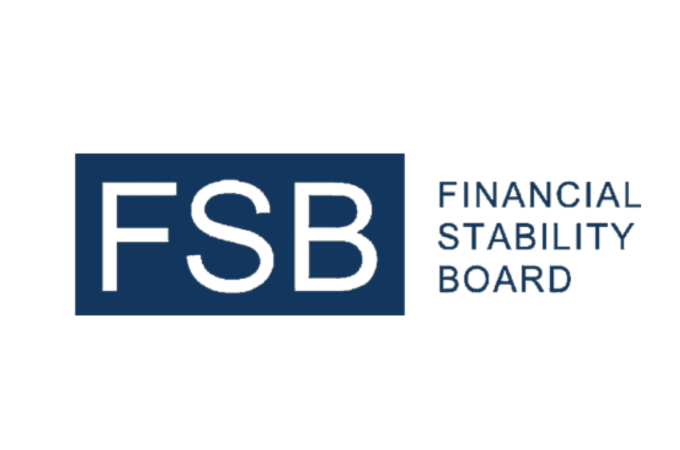
Why most innovation in fintech is not disruptive enough
By Antony Lewis for TechinAsia,
I recently read about Professor Clayton Christensen’s fascinating model for identifying and dealing with disruptive innovation, and will attempt to summarise it in this post.
We’ll touch on the differences and dynamics between disruptive innovation, sustaininginnovation, and efficiency innovation. Although they interact with each other, the appropriate approaches and defence strategies differ. I then provide my own thoughts on how this framework relates to fintech for incumbents, startups, and venture capitalists.
What is disruptive innovation?
Coined by Professor Clayton Christensen of Harvard Business School in his book “The Innovator’s Dilemma“, disruptive innovation uses new technology and business models to serve new or low-end customers with inferior or simpler products at a lower price point.
Disruptive innovations expand markets, and are distinct from sustaining innovations (making better products) and efficiency innovations (lowering cost and making the same products cheaper), which tend to serve the same markets better.
Incumbents become disrupted when they focus on their higher-end more profitable customers while their lower-end is ceded to other companies. This is a sensible and intelligent management decision seeking the profitability metrics that the stock markets demand.
Successful disruptors then move up the value curve by maintaining early advantages (such as lower costs) and making incremental improvements to the product, and start taking core customers from incumbents.
Is Uber a disruptive innovator? Yes and no.
Uber vs taxis
Uber is a sustaining innovator as it didn’t start with low-end customers of taxis; nor did it turn non-consumers into consumers. It also didn’t start with a lower quality product, and is in fact of higher quality than the existing taxi experience.
Uber vs limousines
UberSELECT is a disruptive innovator as it is less expensive than limousines, has an in inferior product (no advance bookings), and created a new market by appealing to people who didn’t usually book limousines.
Why does this distinction matter?
The taxi industry and the limousine industry need to have different approaches in response. Using Christensen’s framework, taxis might be better off focusing on improving their core product by investing in sustaining innovation, and the limousine industry’s response could be to create a lower-end unit, defending against the challenger.
Four points to note about disruptive innovation
Disruption is a process
It starts on the fringe and ends in the mainstream (eg early PCs). Disruption takes time, so often incumbents overlook disruptors until it is too late (eg Netflix vs Blockbuster).
Disruptors build very different business models
Incumbents often don’t understand them, or think won’t apply to their core business or markets — until the disruptor moves upstream. If a common refrain is “They’re not really a threat, they’re going for the low-end”, this is a flag for a disruptor.
Successful companies or products don’t necessarily mean the innovation is disruptive
There are different paths and strategies for success. For example, Uber and iPhones have both found success as platforms, but Uber’s focus has been on creating a better product than taxis (sustaining innovation), and Apple’s focus has been on its developer ecosystem (iPhones are a disruptive innovation compared to laptops but a sustaining innovation compared to smartphones).
“Disrupt or be disrupted” is too glib
A better response for incumbents is to strengthen relationships with core customers through sustaining innovations, or create a separate business to serve low-end customers with a low-end product.
Two realities about incumbents
- Incumbents are driven by their most profitable customers. They therefore tend to invest in sustaining innovation, fleeing from low-margin low-end inferior products rather than fighting challengers.
- Institutionalisation of processes in incumbents makes it hard for individuals, even senior managers, to allocate resources to prioritise disruptive innovation solutions.
… therefore incumbents rarely respond effectively to external disruptive innovations.
The cycle of innovation
- Disruptive innovation success funds and necessitates sustaining innovation
- Sustaining innovation success funds and necessitates efficiency innovation
- Efficiency innovation should lead to capital being reinvested into disruptive innovation, completing the circle. However in Western capital markets this is rarely the case due to the short term pursuit of the “gross profit margin” ratio.
Hence, capital gets stuck in efficiency innovations as the return on investment is faster, but this is a false economy in the long term, as disruptive innovation is the only innovation that increases the size of the market.
I am an incumbent. What’s my takeaway?
Incumbents are generally good at sustaining innovation, for example creating new complex financial products. These are great for their high-end high-value clients, however bread-and-butter clients should not be ignored.
Incumbents probably underinvest in efficiency innovation such as streamlining technology stacks. Without investing here, they can get stuck with a high cost base and can’t release the capital required to invest in disruptive innovation.
Incumbents probably don’t invest enough in disruptive innovation, for example going for the low end or new customers. Being disrupted is an increasing concern, and according to the model, a suitable defence may be to create a business unit far from the politics and financial metrics of the daily business.
Google took the step to create a holding company Alphabet, separating the disruptive businesses from their core search businesses. So far, analysts have recognised this and Alphabet’s share price has responded favourably.
For incumbents scanning the landscape for external threats, a key point is that different types of disruption require different responses.
Step 1: Identify what kind of disruptions these fintech innovations are
Step 2: Ascertain if these are legitimate threats or opportunities
Step 3: Deploy the correct response strategy
Incumbents need to understand that investing in disruptive defence will use up capital, to the detriment of Internal Rate of Return and Gross Margin percentage, and may only pay off in five to ten years, as opposed to funding efficiency innovation which pays off sooner.
I am a fintech startup. What’s my takeaway?
Startups need to understand what type of innovation their model falls under, understand the likely response, and from there work out their strategy.
If the model is a sustaining innovation such as creating new products for customers of incumbents, success is highly determined by how effectively banks can defend core customers. The strategy should focus on how to take customers from incumbents.
If the model is efficiency innovation such as selling technology that reduces costs, then incumbents are the customers, and the strategy should focus on how to fit into existing technology and regulatory frameworks.
If the model is a disruptive innovation such as creating products for new customers, or creating cheaper and inferior products to underserved customers and expanding the market, then incumbents will probably ignore or not perceive the threat initially as they play “the innovator’s dilemma” focusing up the value curve. The strategy should focus at the low end before moving up the value curve.
I’m a venture capitalist. What’s my takeaway?
VCs could consider what type of innovation the investment is in, and determine if this fits the investment thesis and timelines to exit. Different innovations will have different customers and go-to-market strategies. Does the candidate play to the VC’s strengths?
Understand that despite the hype, it’s not all about disruption! There is plenty of value in the other types of innovation, and some may have lower hype-driven valuations than others. These may end up being better performing investments in the end.
Where do blockchains come in?
According to this model, blockchains, a subset of distributed ledger technologies, can be thought of as an efficiency innovation when applied to the banking industry. Much of the commentary is around the cost savings of applying a distributed ledger to the financial services industry, and the users of the technology are incumbents. In this light, incumbents should adopt these technologies if they tick the boxes of efficiencies and cost savings, but not feel threatened that the technology will make their business irrelevant.
However, could distributed ledgers also be a disruptive innovation? Well, in the longer term distributed ledgers could possibly enable new business and underpin societal models by replacing trust with certainty-through-technology. However this doesn’t necessarily mean they themselves are a disruptive technology according to this model.
Some distributed ledger applications, eg cryptocurrencies such as bitcoin, are disruptive: they are a new paradigm (value transfer without signing up or relying on single trusted entities); the user experience is definitely inferior; and they allow for new customers — people who aren’t traditionally banked. Whether or not bitcoin will or won’t work in the long run is the subject of much debate.
Conclusion
Low-end disruption of incumbents is a natural, predictable result of investor demand for gross profitability metrics. Big companies cede ground to disruptors to satisfy their investors, not due to lack of agility: they are good, well-resourced innovators in their own right, but they specialise in sustaining and efficiency innovations.
Labs and “spaces of exception” are becoming trendier for financial institutions. This is a good thing for innovation. While the labs presently may not necessarily be up to speed due to the legacy mindset and bureaucratic drag, very soon they will be well resourced, with efficiencies of scale. Business models relying on startups (eg incubators) had better monitor the situation carefully, lest they themselves become disrupted*!
∗ Of course I use this in a non-Christensen definition. Outcompeted may be more fitting ?
Here’s more from Clayton Christensen on disruptive innovation. From the Clarendon Lectures 2013, Said Business School, Oxford University.





